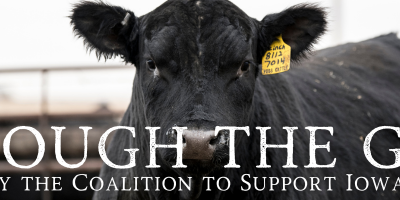CSIF Tips of the Month – January 2013
01-02-2013 in Through The Gate
Rules & Regs Highlight: Keep Your Farm in Compliance This Winter
Is your winter feeding area in compliance?
Areas where cattle are wintered on corn stalks or other crop residue are on environmental regulators’ radar. EPA and DNR officials have indicated over the next few months they will be looking closely at these areas.
In particular, regulators are looking for winter feeding areas that have manure discharges that reach a water source.
We expect they will look closely at the number of animals, the size of the area, the amount of time livestock was in that area and the proximity of the area to an existing feedlot. The amount of crop residue remaining on the field will likely be looked at to determine if it is a “feedlot” or “winter feeding area.”
Make sure there is no runoff to a water source – be sure to keep bale feeders, feed bunks and other feeding places as far from streams, ditches and waterways as possible.
For more information, call the Coalition at 1-800-932-2436.
Winter application of manure
State law prohibits the application of liquid manure from confinement barns with over 500 animal units on both snow-covered and frozen ground, except in the case of an emergency. (This law does not apply to manure from open feedlots or dry manure.)
These facilities cannot legally apply liquid manure on snow-covered ground (defined as soil having one inch or more of snow cover or one-half inch or more of ice cover) from Dec. 21 to April 1. If manure can be injected or incorporated, it can be land applied during this time.
Additionally, liquid manure can’t legally be applied on frozen ground from Feb. 1 to April 1. Frozen ground is defined as “soil that is impenetrable due to frozen soil moisture but does not include soil that is frozen to a depth of two inches or less.”
Siting Tip: Get a Second Opinion
If you’re thinking about building a new livestock or poultry facility, finding the right site is a crucial step. Depending on how large the confinement is, there are separation distances to water, neighbors and public use areas that must be met. However, there are other things to think about, including direction to neighbors, prevailing winds and other social implications, both now and in the future. Don’t be afraid to ask our staff for a second opinion of your site. We understand it’s important for you to get a site built, but we also encourage you to think about the best options for the long-term success of your family and farm.
Quote of the Month
“It only takes one farmer not doing the right thing to have an impact on all of us. I didn’t want to be that farmer, so I called the Coalition.” – Eric Crosman
Recommended News

Through the Gate // December 2025
Stay updated with the Coalition to Support Iowa's Farmers. Discover events and more.
Read More
Through the Gate // November 2025
Stay updated with the Coalition to Support Iowa's Farmers. Discover events and more.
Read More
Through the Gate // October 2025
Stay updated with the Coalition to Support Iowa's Farmers. Discover events and more.
Read More